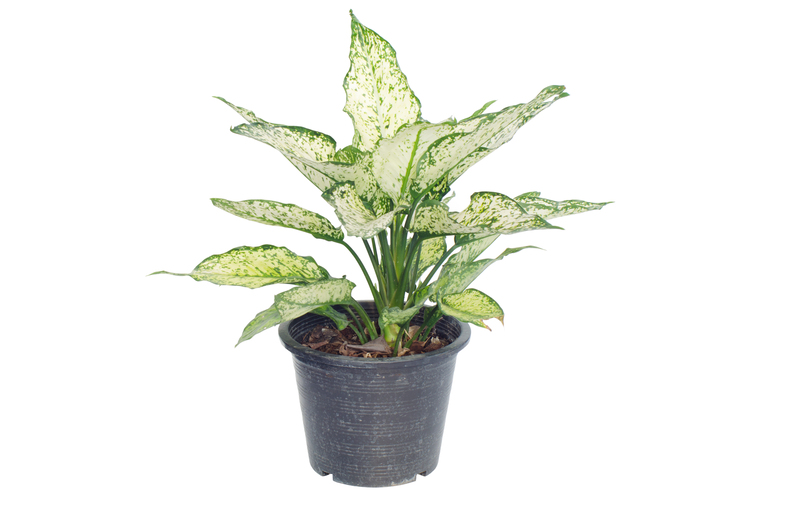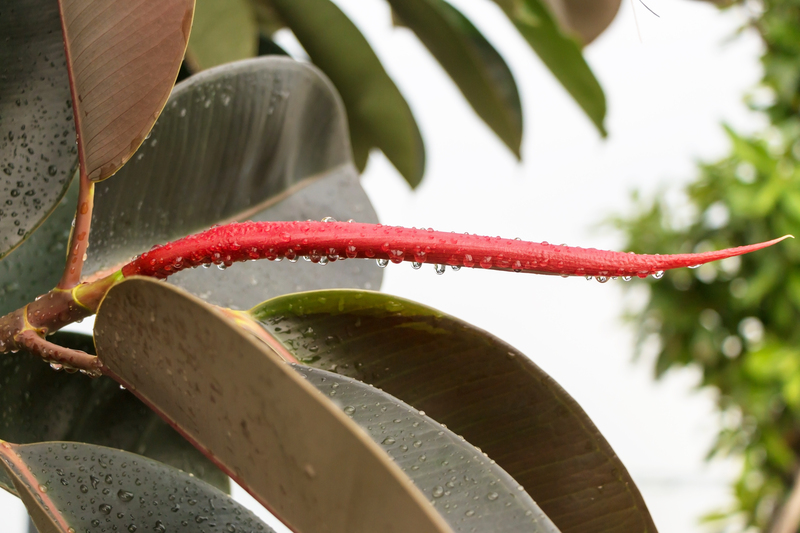Plan a Vibrant Garden for Young Explorers
Posted on 17/09/2025
Plan a Vibrant Garden for Young Explorers: Inspire Curiosity and Learning Outdoors
Are you searching for creative ways to engage children with nature? Planning a vibrant garden for young explorers is a delightful and educational adventure! A thoughtfully designed garden can encourage kids' curiosity, support learning, enhance mental wellbeing, and foster a lifelong love of the outdoors. In this comprehensive guide, you'll discover actionable tips, child-friendly plant suggestions, engaging activity zones, and essential design principles to craft the ultimate garden paradise for your young adventurers.

Why Design a Garden for Young Explorers?
There are countless benefits to creating a kid-friendly garden, specifically tailored for exploration and discovery:
- Physical Development: Digging, planting, and tending beds build strength and fine motor skills.
- Learning Opportunities: Observing insects, planting seeds, and experimenting with garden science spark curiosity about biology and ecology.
- Emotional and Mental Wellness: Time outdoors has been proven to reduce stress and improve mood in children.
- Connection with Nature: Kids who garden develop empathy for living things and appreciation for their natural environment.
- Healthy Eating Habits: Growing fruits and vegetables makes children more likely to try--and enjoy--fresh produce.
Read on for actionable steps to plan a vibrant garden for adventurous kids that's bursting with color, texture, and excitement!
Key Principles for a Vibrant Children's Garden
1. Safety Comes First
- Choose non-toxic plants: Always double-check plant lists to ensure everything is safe for kids and pets. Avoid dangerous species like foxglove or oleander.
- Use child-safe tools: Prioritize lightweight, rounded gardening tools designed for small hands.
- Provide supervision: Even the most child-friendly garden requires attentive adult supervision, especially around tools and water features.
2. Design for Exploration and Adventure
- Create defined pathways: Meandering paths invite movement and discovery. Use woodchips, stepping stones, or mulch for soft landings.
- Incorporate different garden zones: Themed areas--like a "Butterfly Patch" or "Fairy Glen"--encourage exploration and imaginative play.
- Vary heights and textures: Layer tall sunflowers, medium shrubs, and low ground covers for a jungle-like feel.
- Include shelters and hiding spots: Bean teepees, willow tunnels, or sunflower forts become secret nooks for creative play.
3. Stimulate All the Senses
- Visual: Select bold, varied colors and interesting leaf shapes.
- Touch: Lamb's ear, moss, and ornamental grasses provide tactile pleasure.
- Smell: Fragrant herbs like mint, lavender, or lemon balm are perfect for little noses.
- Sound: Add rustling bamboo, wind chimes, or birdhouses to heighten auditory interest.
- Taste: Edible berries, tomatoes, and sugar snap peas are irresistible treats during summer months.
Planning the Layout: Steps to a Kid-Centric Garden Design
Step 1: Observe the Space
Start by spending time in your garden with your children. Watch how sunlight moves during the day, where kids naturally want to play, and which areas feel inviting. Jot down notes about:
- Sunny and shady spots
- Existing trees or structures
- Drainage patterns
- Views you want to highlight or block
Step 2: Sketch a Simple Plan
Map out the main zones and paths. Use a pencil, ruler, and graph paper, or try a free online garden planner. Think about flow--can children loop through different areas, or does something block movement?
Step 3: Choose Themes and Zones
- Butterfly and Pollinator Patch: Attract bees and butterflies with nectar-rich flowers.
- Sensory Walk: Line pathways with herbs, fuzzy plants, and fragrant blooms.
- Edible Jungle: Plant climbing beans, tomatoes, and sunflowers for a snackable adventure.
- Dino Dig or Fossil Corner: Set aside a digging area for treasure hunting and sand play.
- Mud Kitchen: Add a simple outdoor sink, pots, pans, and a mud pie station.
- Art and Craft Spot: Supply chalk, paints, and natural materials for creative projects.
Step 4: Select and Arrange Your Plants
Now comes the fun part--choosing plants that bring your vibrant kids' garden plan to life. Prioritize hardy, easy-to-grow varieties that thrive in your climate and soil.
Superstar Plants for a Lively Children's Garden
When planning a vibrant garden for young explorers, plant selection should emphasize safety, sensory interest, and wildlife attraction. Here are top picks for an exciting, child-friendly landscape:
- Sunflowers: Towering blooms that are quick to grow; their seeds can be harvested as snacks.
- Lamb's Ear (Stachys byzantina): Silvery, ultra-soft leaves for tactile delight.
- Strawberries: Sweet, juicy, easy to pick, and ideal for container or ground planting.
- Nasturtium: Bright orange/yellow edible flowers and round leaves; attracts pollinators.
- Purple Coneflower (Echinacea): Tough, bee-friendly, and striking for any color scheme.
- Blueberries: Delicious fruits and brilliant fall foliage; perfect for curious snackers.
- Pumpkins: Fast-growing vines, perfect for "giant" garden adventures and fall harvesting.
- Mint and Lemon Balm: Invigorate the sense of smell and taste (contain them in pots to prevent spreading).
- Sweet Peas, Runner Beans, or Snap Peas: Climbing vines for living teepees and hands-on harvesting.
Pro tip: Always check local garden centers for native wildflowers, which support wildlife and require less maintenance.
Garden Features That Bring Out Adventure and Learning
To plan a vibrant garden for young explorers, go beyond plants--add features that fuel curiosity, movement, and creativity:
- Bean Teepee: Train climbing beans or sweet peas over bamboo poles to create a shady, edible hideout.
- Bug Hotel: Stack hollow stems, pine cones, and bark in an old box to welcome ladybugs and solitary bees.
- Stepping Stone Path: Personalize with handprints, pebbles, or mosaic tiles for a magical walkway.
- Reflecting Pool or Birdbath: Attract dragonflies, birds, and butterflies while providing a serene focus in the garden.
- Wind Chimes and Water Features: Layer in a gentle soundtrack that soothes and inspires wonder.
- Mud Kitchen: Set up a workspace with old utensils for sensory play and "gourmet" mud treats.
- Log or Stone Seating: Circles of log seats create a woodland classroom or storytelling ring.
Engage Young Gardeners with Projects and Activities
Gardening Activities to Spark Wonder
- Plant a "pizza garden" with tomatoes, basil, and peppers--then harvest ingredients for homemade pizza.
- Nature scavenger hunts: List colors, textures, bugs, or shapes to find around the garden.
- Paint rocks or DIY stepping stones for artistic expression and colorful trails.
- DIY seed tape: Let kids space seeds using strips of toilet paper, water, and flour paste.
- Build a fairy house from pinecones, twigs, bark, and leaves.
- Create a pollinator count chart to track visiting butterflies, bees, and birds each week.
- Harvest-and-taste days for picking and sampling homegrown berries or veggies.
Science Experiments in the Garden
- Sun mapping: Track which areas get sun and shade using simple charts and colored flags.
- Compost in a bottle: Observe decomposition by filling a clear bottle with organic scraps, soil, and worms.
- Seed sprouting jars: Watch roots and shoots grow in glass jars lined with paper towels.
Tips for Sustaining a Kid-Friendly Garden All Year Round
- Rotate crops seasonally: Plant spring bulbs, summer veggies, fall pumpkins, and winter evergreens.
- Keep paths clear and accessible to prevent tripping hazards and allow easy movement.
- Mulch well: Organic mulch suppresses weeds and keeps soil moisture regulated for hands-on digging.
- Choose low-maintenance perennials that come back year after year--less work for adults, more fun for kids!
- Maintain enthusiasm: Regularly introduce new plants, crafts, and activities to keep little explorers' interest alive.
Sample Layout: Vibrant Garden for Young Explorers
Below is a sample layout for maximum engagement, fun, and color:
- Main Pathway: Looping gravel or mulch trail with stepping stones. Mark entrance with sunflowers and giant cosmos.
- Sensory Plant Border: Fragrant herbs (mint, lavender, rosemary) and soft foliage (lamb's ear) lining paths for hands-on touch.
- Pollinator Patch: Mix of coneflowers, bee balm, sunflowers, and native wildflowers. Inset bug hotel and bird feeder.
- Edible Zone: Strawberries, blueberries (in pots or ground), cherry tomatoes, and snap peas on a bamboo teepee.
- Mud Kitchen: Repurpose old table and sink, stocked with "ingredients" and containers.
- Digging Pit: Safe, sand-filled zone for digging up "fossils" or just getting messy.
- Quiet Corner: Mini reading nook with log stools and a little shade canopy or tent.
- Art Station: Rock painting supplies kept under a waterproof shelf near the patio or deck.
Encouraging Independent Play and Group Activities
A well-designed garden for children should accommodate solo exploration as well as group fun. Use these strategies to cater for both:
- Flexible layout: Keep enough open space for games, but also incorporate private nooks for reflection or one-on-one chats.
- Multiple entry/exit points: Kids love shortcuts and loops--creates a sense of freedom and adventure.
- Interactive features: Raised beds for group planting, or bean poles for group-building of a teepee.
- Social projects: Host "garden club" days where kids can plant, build, and harvest together.
Maintaining Engagement: Seasonal Fun for Kids' Gardens
Maintaining a vibrant child explorer's garden is a year-round adventure. Try these seasonal activities:
- Spring: Paint seed pots, start a wildflower patch, and watch bulbs bloom.
- Summer: Host scavenger hunts, pick berries, and have sunflower races (who's grows the tallest?).
- Autumn: Harvest pumpkins, press leaves for crafts, and start a compost pile.
- Winter: Make seed feeders for birds, decorate the garden with fairy lights, and plan next year's garden using seed catalogs.

Essential Tools and Tips for Kid Gardeners
- Lightweight trowels, rakes, and watering cans sized for little hands.
- Child-sized gardening gloves to protect from thorns and dirt.
- Labels or plant markers painted with pictures for non-readers.
- Buckets and baskets for collecting treasures (rocks, leaves, flowers).
- Reusable plant pots for ongoing propagation projects.
Conclusion: Let Your Child's Curiosity and Imagination Blossom
When you plan a vibrant garden for young explorers, you're cultivating more than just plants--you're nurturing creativity, independence, and a love of learning that lasts a lifetime. From colorful plants and edible treats to hidden nooks and hands-on projects, a children's discovery garden offers endless opportunities for fun and growth. Get outside, dig in, and watch your garden--and your young explorers--thrive!
Ready to start your own vibrant kid's garden? Gather your explorers and get growing today!

